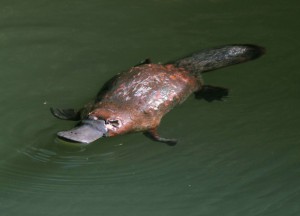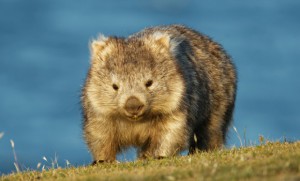Australia is home to many interesting animals. Let’s have a look at 4 more.
Echidna’s have spines like a porcupine, a beak like a bird, a pouch like a kangaroo, and lay eggs like a reptile. Also known as spiny anteaters, they’re small, solitary mammals native to Australia and New Guinea. They eat ants, worms and insect larvae using their long sticky tongues. Their spines are actually modified hairs and they also have the lowest body temperature of any mammal, 32°C. Echidnas are powerful diggers and despite their appearance, are capable swimmers.
The platypus is famous for its strange appearance. It is duck-billed, has a beaver-like tail, lays eggs, has otter-like fur and webbed feet. They are only found in small rivers and streams in in eastern Australia. Platypuses and echidnas are related and are the only two mammals in the world that lay eggs instead of giving birth. Male platypus have a back foot ankle spur which contains a venom that is powerful enough to kill small animals like dogs. Also, platypuses close their eyes and ears when under water and then dig up muddy river beds with their bills, detecting the electric fields of their prey by using their sense of electroreception!
Wombats are small marsupials that look like a cross between a bear, a pig and a gopher. They can’t climb trees like their closest living relative, the koala, but they are good swimmers, and can run up to 40 kph. They are built for digging, and like other marsupials, they have a pouch. However, wombat’s pouches are backwards and their poop is cube-shaped! Wombats live in burrows, which consist of many tunnels and sleeping chambers. Some tunnels can reach up to 200 meters in length. Wombats are herbivores, which means they only eat vegetation. They get most of their water from the foods they eat and can live years without drinking water.
Emus are the second largest bird in the world, just behind the ostrich. They can grow up to 2m tall and are covered in soft fluffy feathers. Emus can’t fly, but they can run up to 50 kph using their powerful legs. Their powerful kick is also handy for keeping predators at bay. They have two sets of eyelids, one for blinking and the other for keeping the dust out. Emus lay their eggs in large ground nests, after which the male emus incubate them for about seven weeks without drinking, feeding, defecating, or leaving the nest! Some people farm emus for their meat and eggs – one emu egg can make an omelette big enough to feed 4-6 adults.



